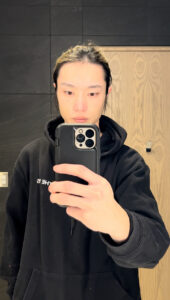Muscles that should be stimulated during head massage
Frontalis muscle
The frontalis muscle is a muscle in the front part of the forehead that works to raise the eyebrows. This muscle extends from between the eyebrows to the hairline. In head massage, this muscle can be stimulated to relieve tension and stress between the eyebrows. Massaging this muscle also helps relieve eye fatigue.

Temporal muscles
The temporalis muscle is a muscle in the temporal region of the head that works to close the lower jaw and to open and close the mouth. It is located in a hollow in the skull called the temporal fossa and extends from the temporal bone to the mandible. In head massage, this muscle is rubbed to relieve tension in the temporomandibular joint. Massage of this muscle also helps relieve headaches and stress. ‘
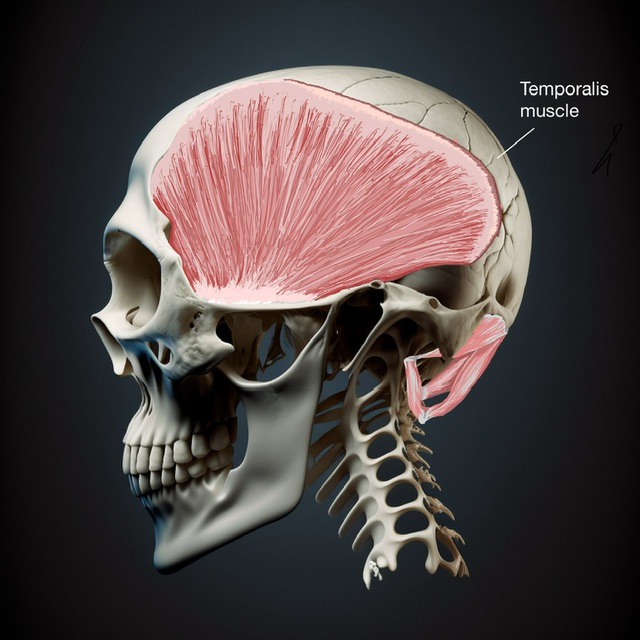
Occipital muscles
The occipitalis muscle is located at the back of the neck and works when the head is flexed backward. In head massage, rubbing or acupressure on the occipital muscles helps relieve tension in the neck and shoulders.
It is also a muscle that many people tend to overuse in their daily lives and work. For example, prolonged use of a computer or smartphone can cause tension in the occipitalis muscle when the neck is continuously bent forward to look at the screen. Therefore, in a head massage, focusing on the occipital muscles can relieve stress and fatigue and have a relaxing effect.
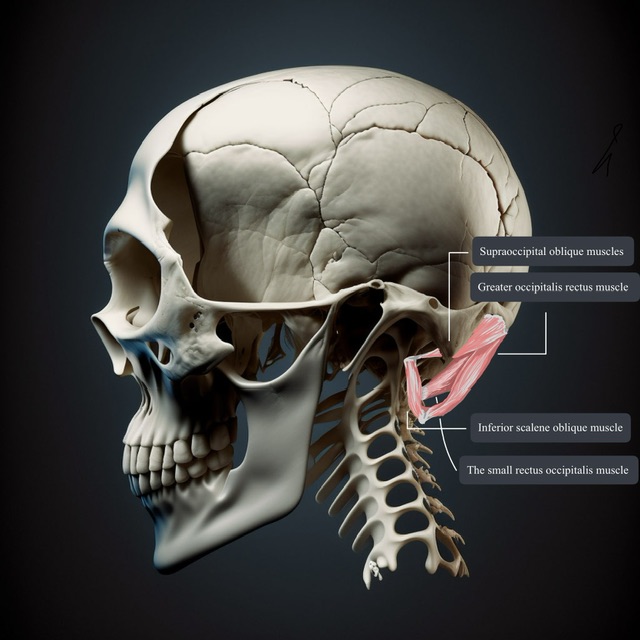
Supraoccipital oblique muscles
These are muscles that are involved in tilting and turning the head. In head massage, the upper scalp can be stimulated by pushing up and rotating the upper scalp with the belly of the finger.
Greater occipitalis rectus muscle
This muscle extends from the back of the head to the neck. In head massage, the large rectus occipitalis muscle can be stimulated by applying acupressure to the occipital muscles.
Inferior scalene oblique muscle
These muscles are involved in tilting and turning the head. Head massage can stimulate the inferior scalene oblique muscle by applying acupressure to the muscles from the back of the head to the neck.
The small rectus occipitalis muscle
This muscle is located below the greater rectus occipitalis and extends from the back of the head to the neck. In head massage, the small rectus occipitalis muscle can be stimulated by acupressure on the occipital muscles.
Cephalothoracic Plate Muscle
The cephalothoracic muscle is one of the muscles in the back of the neck that is used to raise the head. This muscle extends from the occipital bone to the spinous process of the sixth cervical vertebra. In head massage, this muscle is relaxed to relieve tension in the head and neck. Massage of this muscle also promotes blood circulation.

ヘッドマッサージ時に刺激すると良い筋肉群
前頭筋
前頭筋(ぜんとうきん)は、額の前部にある筋肉で、眉毛を上げるときに働きます。この筋肉は、眉間から髪の生え際に向かって伸びています。ヘッドマッサージにおいては、この筋肉を刺激することで、眉間の緊張を和らげたり、ストレスを解消することができます。また、この筋肉のマッサージは、目の疲れを緩和する効果もあります。

側頭筋
側頭筋(そくとうきん)は、側頭部にある筋肉で、下顎を閉じるときや、口を開いたり閉じたりするときに働きます。この筋肉は、側頭窩(そくとうか)と呼ばれる頭蓋骨のくぼみに位置し、側頭骨から下顎骨に向かって伸びています。ヘッドマッサージにおいては、この筋肉を揉みほぐすことで、顎関節の緊張を緩和することができます。また、この筋肉のマッサージは、頭痛の緩和やストレス解消にも役立ちます。
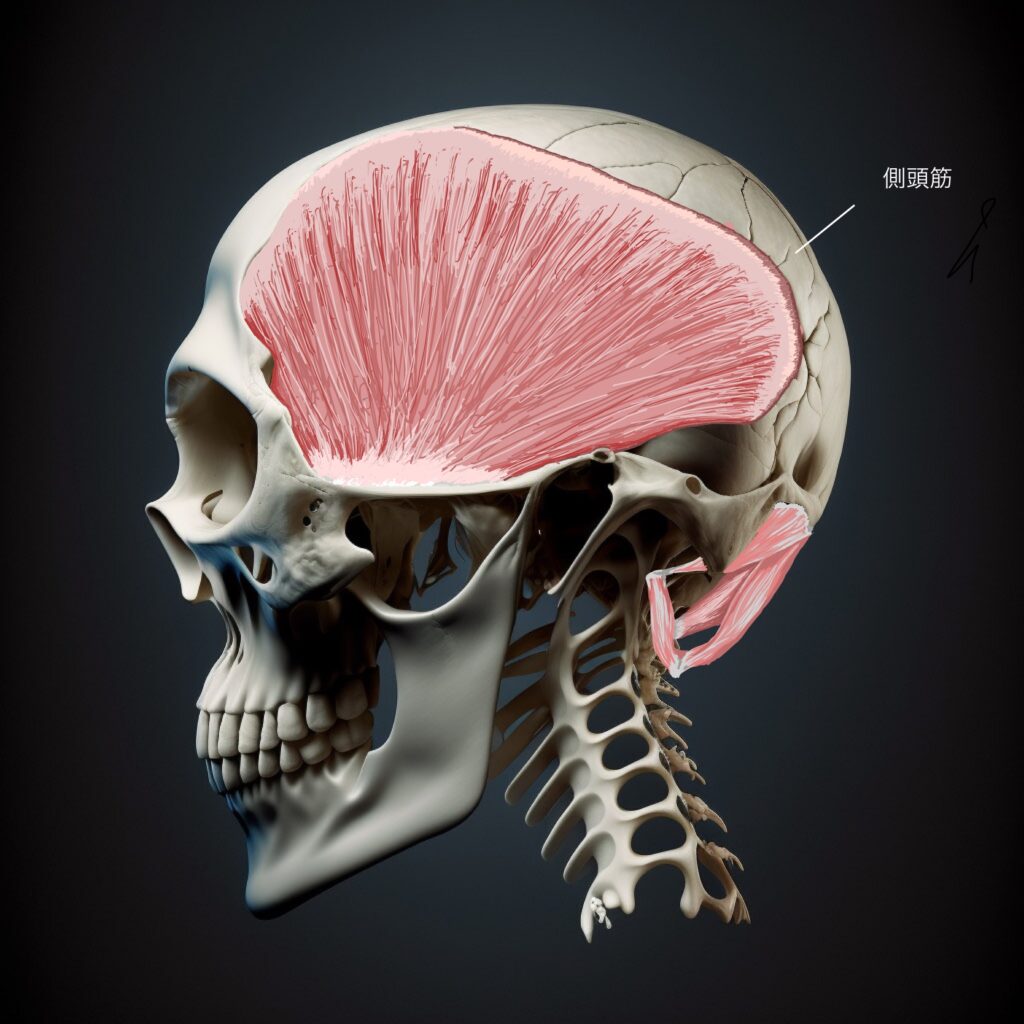
後頭筋
後頭筋(こうとうきん)は、首の後ろに位置する筋肉で、頭を後屈させるときに働きます。ヘッドマッサージにおいては、後頭筋を揉んだり、指圧したりすることで、首や肩の緊張を和らげる効果があります。
また多くの人が日常生活や仕事で使いすぎる傾向がある筋肉でもあります。例えば、パソコンやスマートフォンを長時間使うことで、首を前かがみにして画面を見る姿勢が続くと、後頭筋が緊張してしまいます。そのため、ヘッドマッサージにおいては、後頭筋を重点的にケアすることで、ストレスや疲れを解消し、リラックス効果を得ることができます。
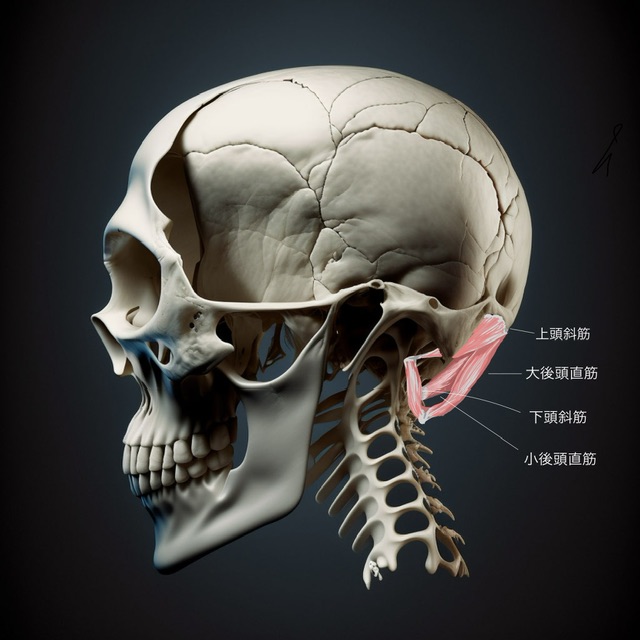
上頭斜筋(じょうとうしゃきん)
頭部を傾けたり、回したりするときに働く筋肉です。ヘッドマッサージでは、上部の頭皮を指の腹で押し上げたり、回したりすることで、上頭斜筋を刺激することができます。
大後頭直筋(だいこうとうちょくきん)
後頭部から首にかけて伸びる筋肉です。ヘッドマッサージでは、後頭部の筋肉を指圧することで、大後頭直筋を刺激することができます。
下頭斜筋(かとうしゃきん)
頭部を傾けたり、回したりするときに働く筋肉です。ヘッドマッサージでは、後頭部から首にかけての筋肉を指圧することで、下頭斜筋を刺激することができます。
小後頭直筋(しょうこうとうちょくきん)
大後頭直筋の下に位置する筋肉で、後頭部から首にかけて伸びています。ヘッドマッサージでは、後頭部の筋肉を指圧することで、小後頭直筋を刺激することができます。
頭板状筋
頭板状筋(とうばんじょうきん)は、首の後ろにある筋肉の一つで、頭部を起こすときに働きます。この筋肉は、後頭骨から第6頸椎の棘突起に向かって伸びています。ヘッドマッサージにおいては、この筋肉をほぐすことで、頭や首の緊張を和らげることができます。また、この筋肉のマッサージは、血液循環を促進する効果もあります。


